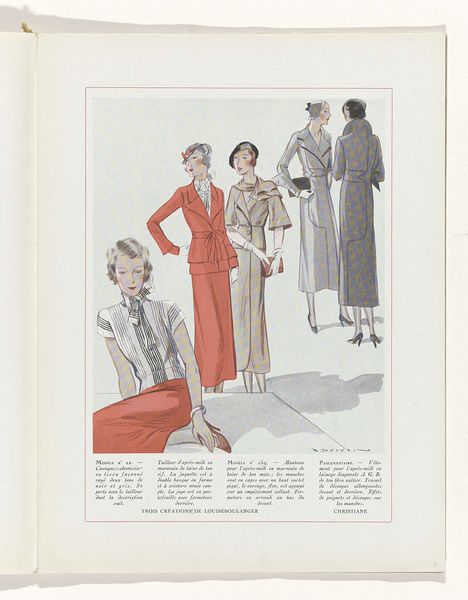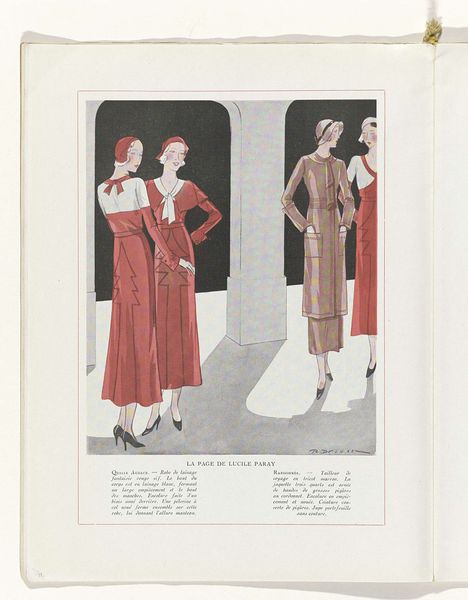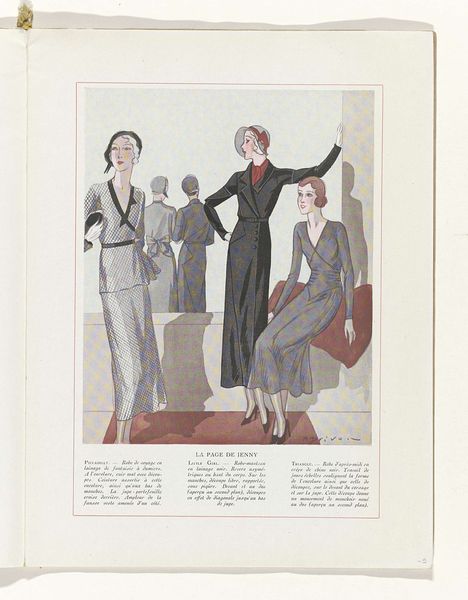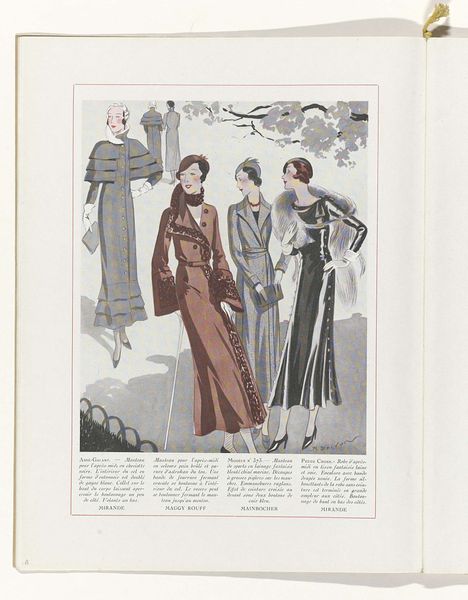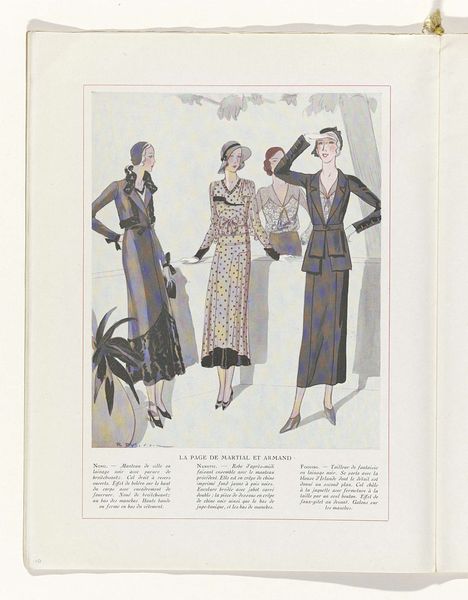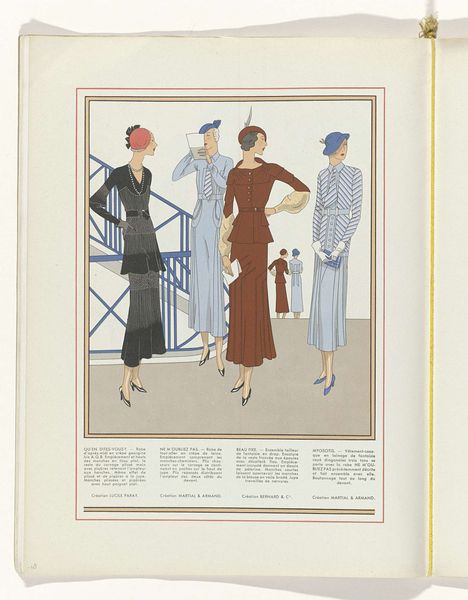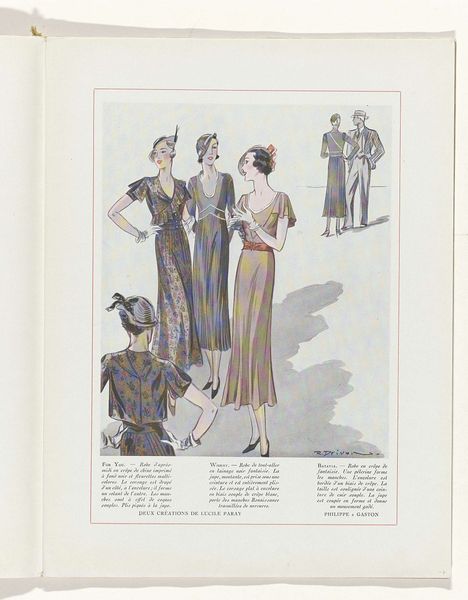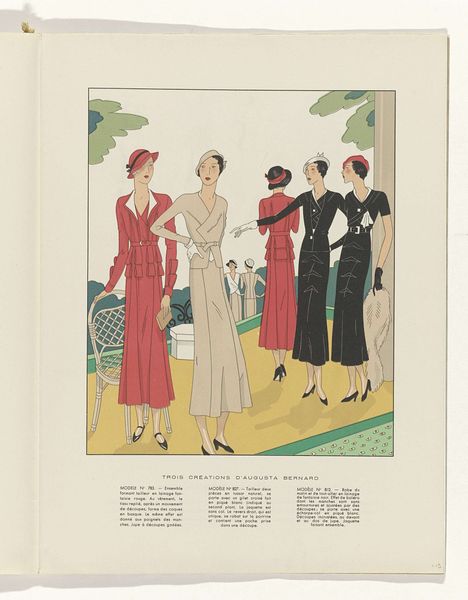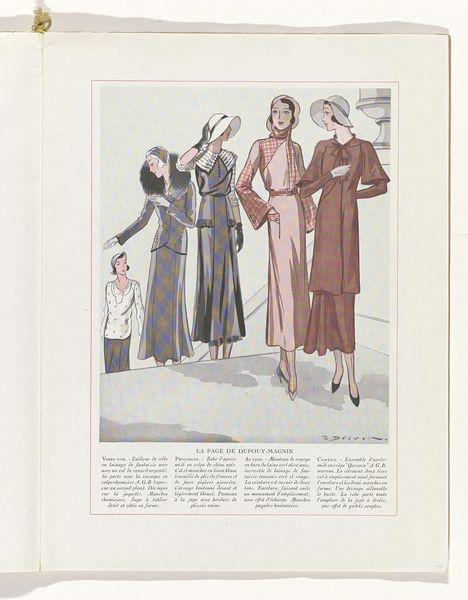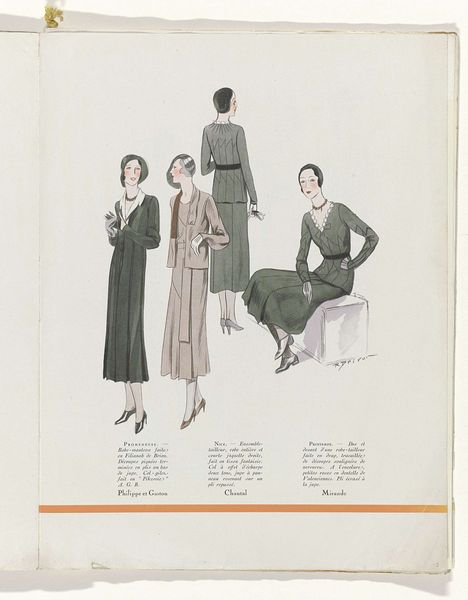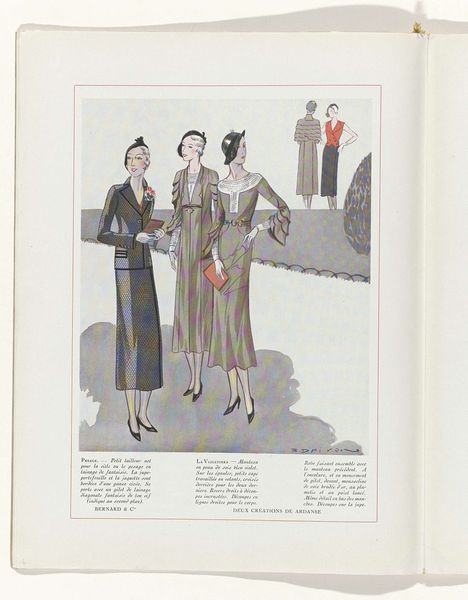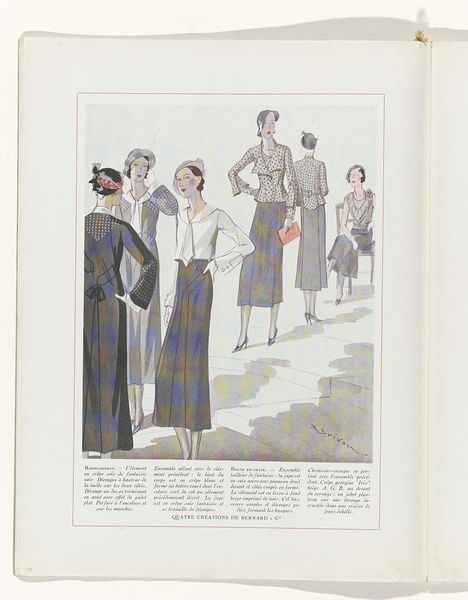
Art - Goût - Beauté, Feuillets de l' élégance féminine, Novembre 1931, No. 135, 12e Année, p. 6 1931
0:00
0:00
drawing, watercolor
#
portrait
#
art-deco
#
drawing
#
figuration
#
watercolor
#
watercolour illustration
#
genre-painting
#
dress
Dimensions: height 315 mm, width 240 mm
Copyright: Rijks Museum: Open Domain
Curator: This watercolor drawing by R. Drivon is titled "Art - Goût - Beauté, Feuillets de l'élégance féminine, Novembre 1931, No. 135, 12e Année, p. 6". Immediately I am struck by how utterly chic these women look. Editor: Oh, absolutely. The composition, with its strong Art Deco lines, feels aspirational, doesn't it? Look at the production of this magazine, though; the "Feuillets de l'élégance féminine" - "Leaves of feminine elegance". This implies not just fashion as utility, but fashion as art, consumable on literal paper. Curator: I see what you mean about consumption. And, looking at it as a materialist object, it’s interesting to think about the labour that went into this single page. Consider the paper itself, the ink, the printing process, the hand of the artist. Were these images intended for a wealthy elite, or a wider, aspiring middle class? Editor: The interplay between industry and artistry here is fascinating. The streamlining of design we see reflected in the fashion—long, lean silhouettes, minimal ornamentation—speaks to the influence of mass production techniques seeping into even haute couture. It mirrors, perhaps, a democratization of style. Curator: I do see some resistance to complete streamlining. These dresses are made of unique material and embellishments, and there is the artist's personal style showing through in his style of figuration. These details demonstrate the inherent limits of a truly “democratic” fashion. Certain materials were, of course, not available to the masses, which suggests a built in social class division in the pages. Editor: Agreed. The clothing brands featured certainly reflect class divides in Parisian society, particularly regarding "good taste". How did fashion publications such as this one not only reflect social and economic divisions, but further amplify and even create those divisions? Curator: It makes you wonder about the societal role Drivon played in reinforcing—or challenging—existing norms and values regarding gender, status, and access through this published fashion drawing. Editor: Right! And what was the role of museums or galleries? Do we know if Drivon exhibited these works elsewhere, outside the commercial publication realm? Were the designs even original? Curator: Exactly. There’s so much packed into this image that speaks to the complicated relationship between commerce, artistic expression, and social identity. Editor: Looking at it from that viewpoint has given me so much insight into the magazine's role as more than simply commercial media.
Comments
No comments
Be the first to comment and join the conversation on the ultimate creative platform.
